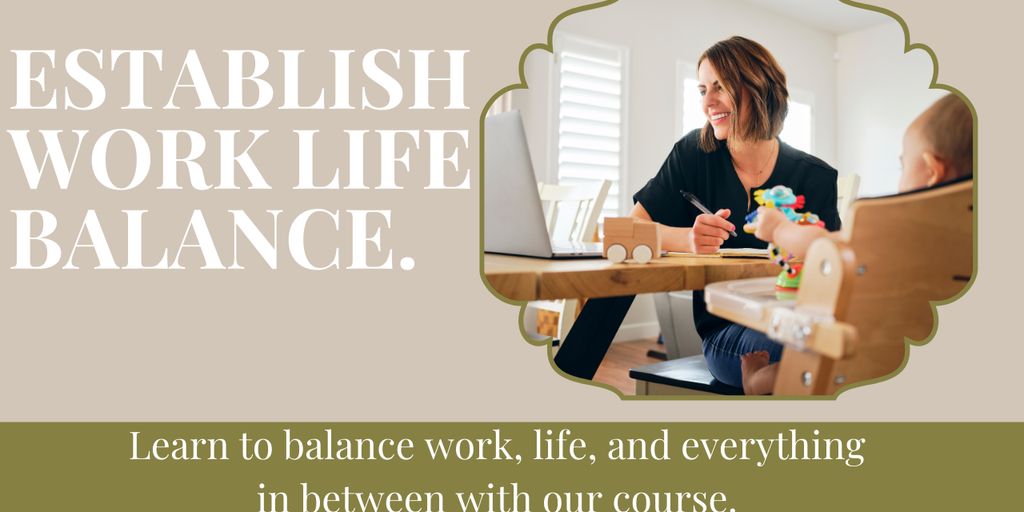
In today’s busy world, finding the right balance between work and personal life can be tough. Many people feel stressed and overwhelmed as they try to manage their jobs and personal goals. But it’s possible to achieve a fulfilling life by mastering work-life balance. This article will share simple and effective strategies to help you balance your work and personal life better.
Key Takeaways
- Identifying your core values can help you set clear personal and professional goals.
- Setting boundaries between work and personal life is crucial for maintaining balance.
- Effective time management techniques can help you prioritize tasks and avoid multitasking.
- Being flexible and adaptable is important for achieving a good work-life balance.
- Taking care of your health and well-being should always be a priority.
Defining Your Priorities for Better Work-Life Balance
Achieving a harmonious work-life balance starts with understanding what truly matters to you. Defining your priorities is the first step in this journey. By being clear on what’s important, you can make space for it regularly in your life.
Identifying Core Values
Before diving into strategies, take a moment to reflect on your core values. What aspects of your personal life are non-negotiable? Is it spending quality time with family, pursuing hobbies, or maintaining health? Similarly, consider your professional aspirations. Do you aim to climb the corporate ladder or seek a fulfilling role that allows for personal growth? Identifying these values will guide your decisions and actions.
Setting Personal and Professional Goals
Once you’ve identified your core values, the next step is to set clear goals. These goals should align with both your personal and professional aspirations. For instance, if family time is a priority, set a goal to have dinner with your family at least three times a week. If career growth is important, aim for specific milestones like completing a certification or taking on new responsibilities at work.
Aligning Actions with Priorities
Having defined your values and set your goals, it’s crucial to align your daily actions with these priorities. This means making conscious choices that reflect what’s important to you. For example, if health is a priority, schedule regular exercise sessions and stick to them. If professional success is a goal, dedicate time to skill development and networking. By aligning your actions with your priorities, you ensure that you’re not just busy, but productive and fulfilled.
Finding a suitable work-life balance may be a common goal, but it looks different for everyone. Consider five key questions to see where you stand and make adjustments as needed.
Setting Boundaries Between Work and Personal Life
Creating Physical and Mental Separation
Want to keep your work hours from bleeding into your personal life? If you’re working from home, this can be a particularly tricky problem. To address it, set up a dedicated workspace at home, even if it’s just a corner of your living room. This can help you mentally switch gears when it’s time to clock out and relax.
Communicating Boundaries to Others
Whether you’re working remotely or not, don’t be shy about setting boundaries with your coworkers and family. Tell them when you’re free to chat or tackle projects, and when you need some “me time.” It’s okay to put your foot down if they try to rope you into work stuff on weekends or after quitting time.
Sticking to Your Set Boundaries
Once you’ve set your boundaries, it’s important to stick to them. This means resisting the urge to check work emails or engage in work-related tasks during evenings, weekends, or vacations. By doing so, you’ll create a clear divide between your professional and personal worlds, giving you the freedom to engage wholly in each without the other constantly vying for your attention.
Effective Time Management Techniques

Managing your time well is essential for achieving a good work-life balance. Here are some techniques to help you make the most of your time.
Prioritizing Tasks Efficiently
Prioritizing your tasks is the first step to effective time management. Start by identifying the most important tasks that align with your goals. This ensures that you are not just busy, but productive. Make a list of tasks and rank them based on their importance and deadlines. This way, you can focus on what truly matters.
Using Tools and Apps for Organization
In today’s digital age, there are many tools and apps available to help you stay organized. Apps like Asana, Trello, and Google Calendar can help you keep track of deadlines and avoid procrastination. These tools allow you to set reminders and notifications, ensuring you stay on top of your tasks. Using these tools can make a significant difference in how you manage your time.
Avoiding Multitasking Pitfalls
While multitasking might seem like a good idea, it can actually decrease productivity and increase stress. Focus on one task at a time to ensure you complete it efficiently. This approach helps you maintain a higher quality of work and reduces the chances of making mistakes. Remember, it’s better to do one thing well than to do many things poorly.
Effective time management is not about doing more things in less time, but about doing the right things at the right time. By prioritizing tasks, using organizational tools, and avoiding multitasking, you can achieve a better work-life balance and feel more fulfilled in both your personal and professional life.
The Importance of Flexibility in Achieving Work-Life Balance
Exploring Flexible Work Arrangements
Flexibility is one of the most valued qualities in the workplace by employers and employees alike. Embracing flexible work arrangements, such as remote work or flexible hours, can help you balance your professional and personal lives. Flexible work empowers employees to manage their time better, leading to greater satisfaction. Consider discussing options with your employer to find a setup that works best for you.
Adapting to Changing Circumstances
Life is unpredictable, and being adaptable is key to maintaining balance. Whether it’s adjusting your schedule for a family event or reevaluating your workload during stressful periods, staying flexible helps you navigate life’s ups and downs. Remember, flexibility isn’t just about work; it’s about being open to change in all areas of life.
Balancing Structure and Flexibility
While flexibility is important, having some structure is also crucial. Create a routine that allows for both work and personal time, but be willing to adjust as needed. This balance between structure and flexibility can help you stay organized while also being adaptable. Finding this balance can lead to a more fulfilling and less stressful life.
Prioritizing Health and Well-being
Incorporating Regular Exercise
Engaging in regular physical activities isn’t just about staying fit; it’s a vital booster for your productivity. It clears your mind, allowing you to return to your tasks with renewed focus and energy. Whether it’s a brisk walk, a gym session, or yoga, regular exercise can greatly improve your physical well-being and mental state.
Ensuring Adequate Sleep
Ensuring you get adequate sleep each night is foundational to your decision-making, problem-solving abilities, and overall effectiveness. Quality sleep supports your body’s needs, fueling your day-to-day activities and long-term goals. A good night’s sleep is essential for achieving work-life balance and long-term success.
Adopting Healthy Eating Habits
A balanced diet plays a crucial role in maintaining your health. Eating nutritious meals can boost your energy levels and overall health, enabling you to tackle both work and personal commitments more effectively. Healthy eating and hydration are key to staying energized and focused throughout the day.
Remember, balancing work commitments with self-care practices isn’t a luxury—it’s essential for achieving work-life balance and long-term success. When you take care of your well-being, you’re not just enhancing your productivity; you’re setting a sustainable pace that fosters personal and professional fulfillment.
Cultivating Mindfulness and Self-Care
Practicing Mindfulness Techniques
Mindfulness is about being present in the moment. Engaging in mindfulness exercises like meditation or deep breathing can help you stay grounded. These practices reduce stress and improve your overall well-being. Try to set aside a few minutes each day to focus on your breath and clear your mind.
Scheduling Regular Breaks
Taking regular breaks is essential for maintaining your energy and focus. Short breaks throughout the day can prevent burnout and keep you productive. Whether it’s a quick walk, a stretch, or just stepping away from your desk, make sure to give yourself time to recharge.
Engaging in Self-Care Activities
Self-care is about taking time for activities that rejuvenate your mind, body, and soul. This could be anything from a relaxing bath to reading a book. Prioritize self-care to ensure you have the energy and mental clarity to tackle your daily tasks. Remember, taking care of yourself first and foremost is crucial for a balanced life.
Cultivating loving relationships with yourself is the foundation of effective self-care. When you prioritize your well-being, you are better equipped to handle life’s challenges and support others.
Building and Nurturing Relationships
Spending Quality Time with Loved Ones
Making time for each other is crucial for building strong family relationships. Whether it’s a family dinner or a weekend outing, these moments create lasting memories and strengthen bonds. It’s not just about the quantity of time but the quality. Engage in activities that everyone enjoys and make an effort to be present in the moment.
Creating Supportive Social Networks
A supportive social network can greatly lighten your workload and reduce stress. Surround yourself with friends, family, and colleagues who understand and respect your need for work-life balance. Lean on your support network for encouragement, advice, and practical help when needed. Remember, seeking support isn’t a sign of weakness; it’s a strategy for success.
Balancing Social Life and Personal Time
Balancing social life and personal time is essential for maintaining a healthy work-life balance. It’s important to appreciate each other and communicate about how things are going. Set aside time for social activities but also ensure you have time for yourself. This balance helps you recharge and stay connected with your loved ones.
Conclusion
Achieving a good work-life balance is not about splitting your time equally between work and personal life. Instead, it’s about being flexible and focusing on what matters most at different times. By setting clear priorities, creating boundaries, managing your time well, and taking care of yourself, you can lead a happier and more fulfilling life. Remember, it’s okay to ask for help and to say no when needed. Embrace the journey towards balance, and you’ll find that both your work and personal life can thrive together.
Frequently Asked Questions
What is the first step to achieving work-life balance?
The first step is figuring out what really matters to you. Think about your top priorities and how you can align your actions with them.
How can I set boundaries between work and personal life?
You can start by setting specific work hours and sticking to them. Let your family and coworkers know about your schedule so they can respect it.
What are some effective time management techniques?
Prioritize your tasks, use tools like calendars and to-do lists, and avoid multitasking. These can help you stay organized and focused.
Why is flexibility important in work-life balance?
Flexibility allows you to adapt to changes and unexpected events. It helps you balance work and personal responsibilities better.
How can I prioritize my health and well-being?
Make time for regular exercise, ensure you get enough sleep, and eat healthy foods. Taking care of your body and mind is crucial.
What are some simple self-care activities?
Self-care can be anything that makes you feel good, like reading a book, taking a walk, or spending time with loved ones.






